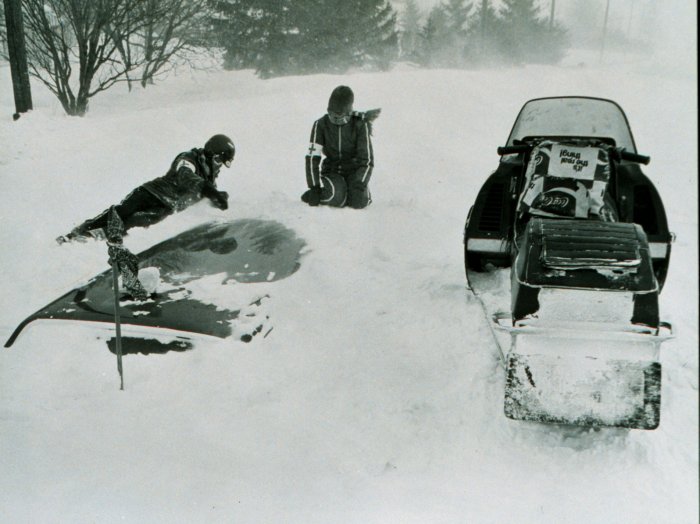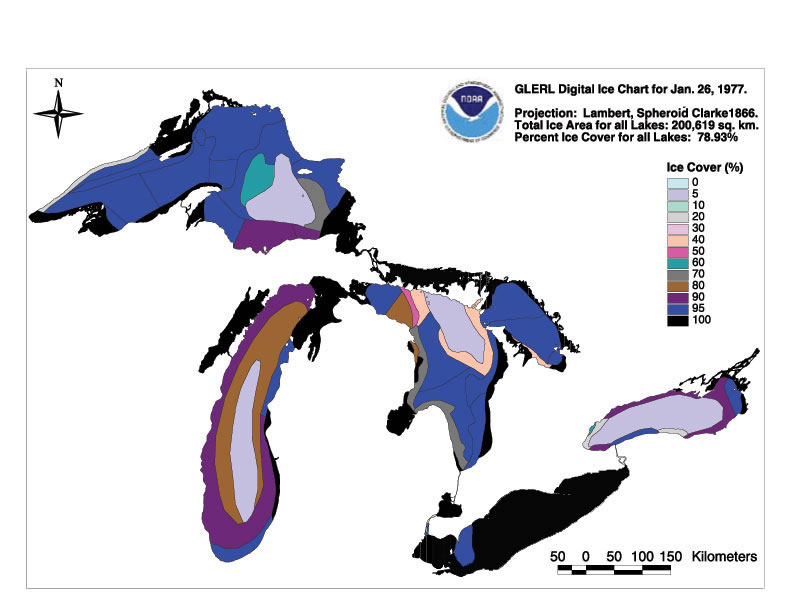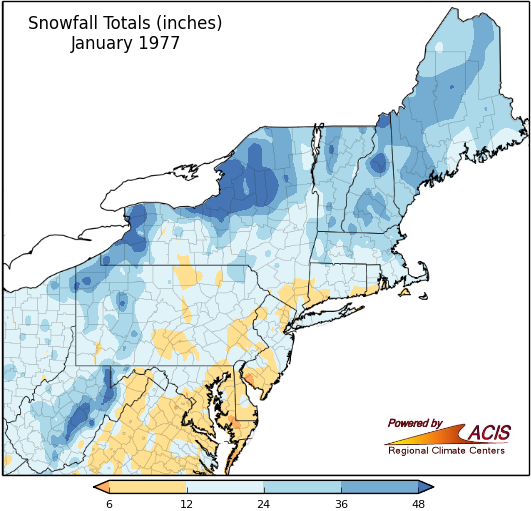Blizzard of '77
Red Cross workers search for victims buried in cars. Photo taken by American Red Cross, courtesy of NWS Collection.
The Blizzard of ’77, also known as the “Blizzard that Buried Buffalo”, was one for the record books. A blizzard, as defined by the National Weather Service, occurs when there are sustained winds of at least 35 miles per hour and snow causes visibility to be less than a quarter mile; both conditions must last for three hours or longer. The Blizzard of ’77 easily met and surpassed these requirements. On January 28, winds were above the threshold conditions for nine consecutive hours and zero visibility lasted for 13 consecutive hours. These blizzard conditions lasted on and off until February 2, when the skies finally cleared.
This map, courtesy of GLERL, shows percent of ice cover on January 26, 1977. Almost all of Lake Erie had 100% ice cover.
During the 5-day event, only 12.3 inches of snow fell at the Buffalo Airport, but a snowy December and January left over 30 inches of snow on the ground. Lake Erie froze early that year and was also blanketed with snow. When combined with the high winds, this all provided plenty of snow to reduce visibilities and create drifts of 30 feet in some places, in what was described as cement-like snow. President Carter declared several counties a federal disaster area, which was the first time ever for a snowstorm in the US. Most recently, several Mid Atlantic states received federal disaster aid after the January 2016 blizzard closed roads and businesses. The Blizzard of '77 caused 29 deaths, many due to people trapped in their vehicles. Mayor Stanley Makowski was quoted as saying, “This city is fighting for its life.”
January 1977 snowfall.
Buffalo totaled 68.3 inches of snow that January – more than two and a half times the typical 25 inches – and ranks as their 3rd snowiest month. The snow season ended with 198.9”, which still ranks as the snowiest on record for the city. That is more than double the normal 94.7 inches they see in a season and more than the last two seasons combined.



